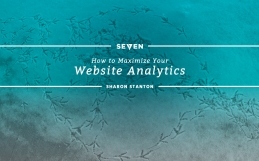How do you know if your landing pages are working?
What does a landing page need in order to work?
What does “work” mean in this context, and what is a landing page, anyway?
First things first! A landing page is a web page (often associated with an offer) where visitor traffic is sent specifically to take a desired action. Landing pages frequently have a unique URL associated with them (e.g.: yourdomain.com/offer). You will know your landing page is working when you start to see an increase in activity and conversions. Your content tracking efforts will be a big help here.
A generally successful landing page will include these main elements:
- Headline
- Brief description of your offer
- Supporting images (keep these to a minimum)
- Contact form
What else does a top-notch landing page need?
- Your visitors should not be surprised when they arrive at your landing page. It must reflect whatever call-to-action got them there in the first place. (In other words, don’t pull a “bait and switch”-type maneuver. No one likes that.)
- Communicate clearly (but simply!) the value of what you are offering.
- The action you want people to take – complete a contact form, download a coupon, or click to subscribe or purchase – should be “center stage”.
- Do not include your website’s main navigation. This keeps people engaged on the page because there is nothing to distract them or take them elsewhere.
- Keep the contact form short. (Real world scenario: I recently abandoned a landing page offering a value I was interested in because the contact form was so long. I figured there had to be a catch because they were asking me so darn many questions.)
Here are some examples of strong landing pages.
Landing pages are a great way to test the waters for a new product or offer. They can be relatively quick to put together, and allow you to clearly see what is working and what is not. Interested in learning more? Connect with Studio 7 and let’s talk!




